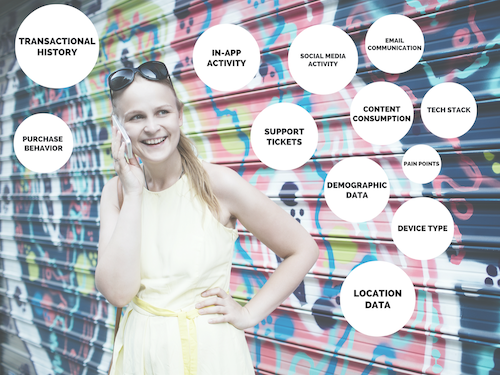According to SiriusDecisions, 68 percent of B2B companies have some form of lead scoring, but only 40 percent of salespeople get value from it! Why? The lead scoring methods that have become so popular in SaaS organizations around the globe are intrinsically flawed. This is a bold claim and will be painful for many to hear, but let me explain.
“Only 40% of sales people get value from lead scoring.”
Traditional lead scoring takes into account a variety of pre-determined factors that help in qualifying a leads propensity to purchase. Savvy businesses will likely have established scoring criteria that includes a combination of demographic attributes, lead source and estimated budget.
Popular marketing automation tools such as Marketo and Hubspot, may also complement this data with what they call “behavioral attributes,” which by their definition includes online activity such as page views, email engagement or content downloads.
So, what’s wrong with this strategy? The “behavioral attributes” used by traditional lead scoring models are focused on the top of the funnel. But, today’s customer journey is more complex, non-linear and circular than ever before.
“Behavioral attributes used by traditional lead scoring models are only top of the funnel.”
Here are three reasons why your lead scoring system is failing you and what you can do to fix it:
1. It’s based on assumptions
Setting up lead scoring in a marketing automation tool requires a slew of guesses and assumptions on what attributes indicate a lead is positively or negatively inclined to make a purchase. Even those that tout “predictive lead scoring,” look only at factors such as “information filled out on your website, social information, demographics or media written by your company.”
Yet, there is no evidence that any of these factors contribute to a lead converting for your specific organization. Every company, product and customer is different. A one-size-fits-all model will ignore the criteria that make your organization unique. In fact, even Hubspot’s explanation of their lead scoring model states, “nailing down a consistent formula for this can be really difficult for many marketers, and often comes down to a “try and check” process.” But, who has the time to continually “try and check” for lead scoring accuracy?
“A one-size-fits-all model will ignore the criteria that make your organization unique.”
Modern marketers must be data-driven to eliminate room for error. A successful lead scoring system will not force you to guess, but instead, provide true indicators for the scoring attributes that directly relate to your company.
2. It’s labor intensive and stagnant
If you’ve taken the time to read the 56 page Marketo document on lead scoring, my guess is that you’ve invested an incredible amount of energy into building out a lead scoring model. While this formula may seem accurate now, will it still be accurate in three months?
“There is nothing stagnant about the way customers engage with your brand.”
There is nothing stagnant about the way customers engage with your brand. New channels, mediums and metrics influencing the customer journey are introduced every day. Committing to a lead scoring model that doesn’t dynamically adjust as your customers do, will produce inaccuracies. And, without manually adjusting on a regular basis, miscalculations won’t be addressed in a timely manner.
3. It does not include product engagement data

If your company offers a free trial, operates on a freemium model or upsells based on product usage, it’s imperative to monitor product engagement at a granular level. A true behavioral lead scoring model will identify what features were used, how often they were used, track other users from the same organization and identify when a heavily engaged user is ready to upgrade.
According to Tomasz Tunguz, when a sales team calls leads that include product engagement data, customers typically convert at 25 to 30 percent! However, in traditional lead scoring systems, product usage is completely dismissed. Companies rely so much on who the person is, rather than what they’re doing.
“Companies rely so much on who the person is rather than what they’re actually doing.”
Conclusion
For lead scoring technology to provide value, it has to be smarter. According to Gartner, 70 percent of leads are lost from poor follow-up. But, with hundreds of leads coming in every day, how do you prioritize? Organization’s need a full-time, intelligent system for monitoring successes and failures. One that automatically adjusts the scoring based on real-time data and results.
“70 percent of leads are lost from poor follow-up.”
There are players in the industry trying to solve this problem. One of them is Infer. Infer uses machine learning to predict the likelihood of a lead to convert based on basic data types such as demographics, firmographics and technologies used. They recently integrated with Marketo to leverage Marketo’s “behavioral data.” Yet, their scoring model is still is relying solely on top of the funnel data, ignoring the modern customer’s circular, non-linear journey.
At Woopra, we’ve tackled this problem through the consolidation of data, the integration of essential applications and dynamic lead scoring functionality. The platform integratesdata from your marketing automation tools, CRM, support, mobile app, chat, web and product. A lead score is assigned that dynamically changes based on product engagement, firmographic, demographic and behavioral criteria. Automated triggers then push this data to feed Salesforce, your marketing automation tools and more!
“Woopra is helping to drive customer success within the customer data analytics market by leveraging the power of the Salesforce Platform to seamlessly integrate behavioral insight and CRM, ultimately transforming the way companies connect with their customers.”
— Ron Huddleston, Senior Vice President, ISV & Channel, Salesforce.com
Whatever your solution, a successful lead scoring model will map to today’s dynamic customer journey. It will adjust for every piece of the funnel as customer’s weave in and out of stages throughout the course of time. Most importantly, it will focus on both who the user is and what the user does.



